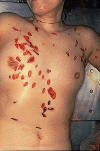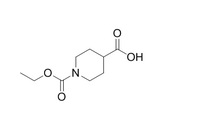
Sexual Assault: What to Do
If you have been sexually assaulted or think you have been, first, you must overcome the stigma of reporting the event. The stigma of reporting a sexual assault or rape for both women and men is not as great as it once was, and this change works in favor of the victim. The women's movement and the media have done a great deal to remove the stigma of being a victim of sexual assault.
If sexual assault has taken place, you should report the crime for many important reasons, including the following:
To keep the same person from assaulting others
To provide psychological closure for you
To be certain about your own health and have an examination to rule out medical problems related to the assault
Sexual assault is an emotionally charged crime in which passions for prevention and prosecution run at a high level. Many people involved in sexual assault work have been victims of sexual assault themselves. These people take on the role of advocates and support persons for victims of sexual assault. Special sexual assault examination centers have been set up in most cities to work with victims of sexual assault in a sensitive manner.
Report sexual assault to law enforcement as soon as possible. Although you may have many reasons for delay (such as fear, guilt, and confusion), any delay in reporting can and will be regarded as suspect and inevitably used to imply that you are making a false allegation.
Tell family and friends immediately, and inform law enforcement at the same time. Family and friends can be helpful during the most difficult early moments after an assault.
Use these steps in reporting sexual assault:
When reporting sexual assault, document as many details as possible, as soon as possible. Accurate recall of events will fade quickly, and documentation in sufficient detail soon after an incident is thought of as more reliable evidence in the legal proceedings that will follow.
Note the location and time of any events. Describe the number and characteristics of the assailant or assailants. Write down as much detail as possible about the circumstances surrounding the assault as soon as possible after the assault. Make an effort to recall each and every aspect of what occurred during the assault and turn over this information to law enforcement. Each of these details increases the chances that the suspect will be caught and successfully prosecuted:
Each activity
The sequence of activities
How long each activity lasted
What was said and by whom
The number of times that resistance was offered
The type of resistance
Any unusual details
Any associated physical assault
Any pain
Types of threats that were used
Whether weapons were talked about, used, or seen during the assault
Any bodily fluids seen or felt
Any injuries that may have been inflicted on the assailant
Maintain as much evidence as possible in its intact state. Do not wipe away or throw away any secretions that can be identified. Do not wash or change clothing, bedding, furniture, or any fabric. Put these items into dry paper bags and seal them.
Resist the strong urge to clean up by washing, showering, and douching. You will be given a special sexual assault examination by trained health professionals at a hospital, and specimens that will be collected are very important in proving the guilt of the assailant. Many of these specimens contain DNA evidence that can provide conclusive proof of the identity of the assailant.





 It arises lately as we see increasing crime rate
It arises lately as we see increasing crime rate 
 *
*










